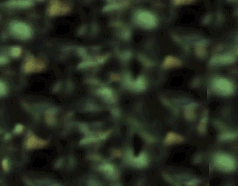

 |
 |
| An adaptation of… | ||
 |
||
|
Presented by…
|
||
|
|
||
 |
||
|
Meditation can be beneficial if we embrace meditation as part of our daily life. Meditation allows a depth of relaxation which cannot be experienced by sitting around doing nothing, watching the television, or reading a book. We can make meditation a part of our daily routine. The Yellow Rose meditation, is one method of achieving a truly relaxed state. |
||
|
|
||
|
We may sit comfortably in a chair in a quiet room which should be warm and comfortable, though not stuffy and certainly not cold. We should try not to have any distracting lights shining when we do this exercise. We make sure that our back is vertical and supported. Our thighs should be parallel with the floor with our knees slightly apart. Our feet should point forward, although they can be slightly apart. We will be more comfortable if do not wear any tight clothing during The Yellow Rose meditation. Overall, the idea is to find a position where our body muscles are completely relaxed, and free from any tension. We may complete The Yellow Rose meditation when lying down on a bed, but our state of relaxation may lead us fall asleep, which could be our purpose for completing The Yellow Rose meditation. |
||
|
|
||
|
We close our eyes. We test for any tension in our body by checking each area in turn. We gently roll our head from side to side and concentrate on any muscular tension. We do the same for our face, arms, shoulders and legs by consciously feeling them in our mind. We will be astonished at the tension which we have built up, particularly the first time that we try The Yellow Rose meditation. We say to ourselves; 'I am very peaceful'. |
||
 |
||
|
We concentrate our mind's eye on a place where we feel that we can be totally relaxed, perhaps lying on a sun soaked beach with the waves breaking calmly onto the sand, or sitting by a waterfall with the spray gently caressing us. If we find that our image of this scene changes, and our mind starts to wander, we repeat to ourselves, three or four times; 'Not now , at this time I am very peaceful'. We should then find that our mind will stay and remain on our relaxation. |
||
 |
||
| We concentrate our mind's eye on a yellow rose. We examine the formation of the flower, the petals, the stamens, the convolutions of each petal, the veins and capillaries running through the petals, the depth of colour. |  |
 |
||
|
We may find that the feeling associated with complete relaxation will be heaviness, this is caused by a complete loss of muscle tension.The final phase of relaxation is to ensure that our abdomen is totally relaxed. Our breathing at this stage should be slow and steady, just as it is when we are asleep. |
||
 |
||
|
To come out of the meditative state, we increase our breathing and gently flex our fingers and hands. We enjoy the feeling of stretching each part of our body. We slowly count to ten, we open our eyes and stand up. We do not jump up off the chair and rush about, we take our time. |
||
 |
||
|
The enjoyable feelings of relaxation will most certainly help us recover from the stresses of the day. Derek Acorah. |
||
 |
||
 |
||
 |
||
 |
||
 |
|
Copyright permission is seldom withheld. |
||